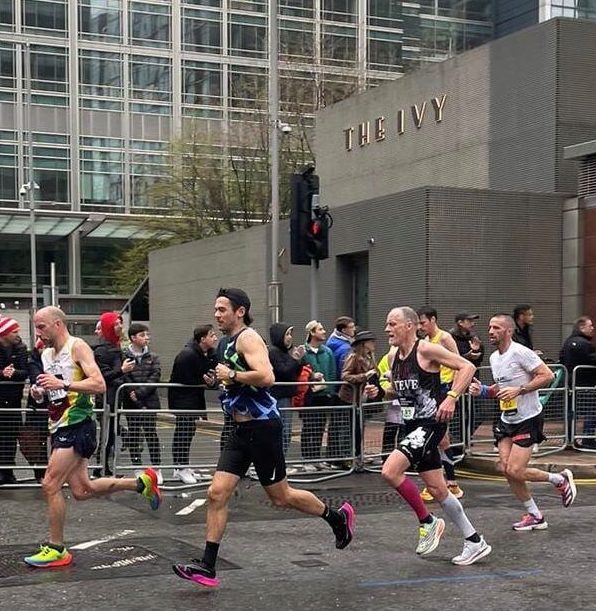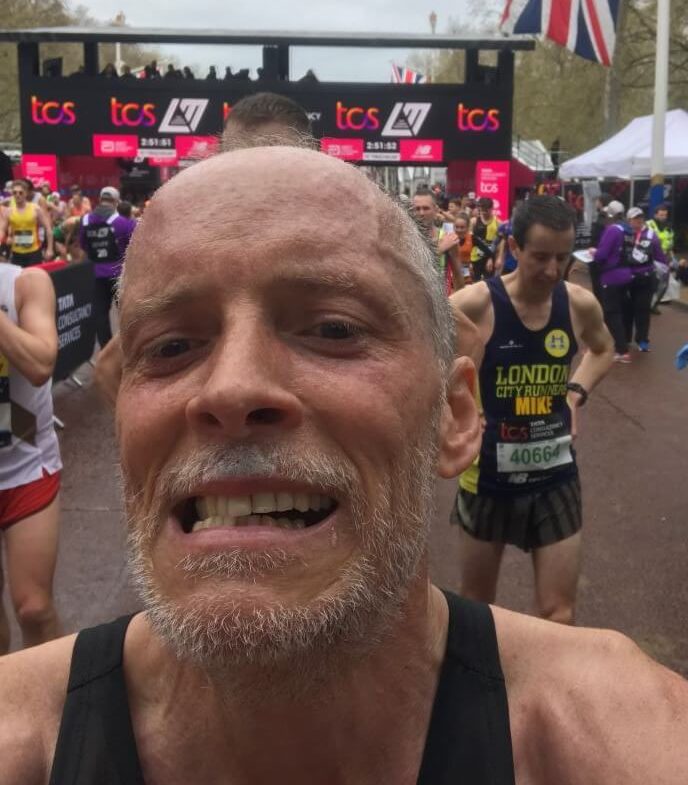Products You May Like
Could Kelsey CEO Steve Wright break his 2:52 marathon PB at the London Marathon not long after turning 54?
With a 3:55 marathon result at Malta in 2022, where I’d struggled to push myself to get under four hours, I’d completely overhauled my training plan to do much better at London in 2023, looking to beat my personal best result of 2:52, achieved some 25 years earlier at Prague.
Kelsey CEO on chasing a London Marathon PB at 54
I knew I needed to make a lot of changes. Chiefly, my low-milage cross-training approach was not the answer for a good marathon. Nearly everything had to change – the only constant was the focus on cross-training, which for me was mostly cycling but also some swimming. Having taken a lot of advice, I’d come up with a six-point plan:
- A focus on higher mileage
- Lots of slow recovery runs
- Regular speed work and shorter distance racing (5k to half marathon)
- Core strength and flexibility training
- The right nutrition plan for training and for the race
- A fast pair of racing shoes
All was going as well as could possibly be expected, including a sub-17-minute 5k at the British Masters race at Battersea Park, a 60-minute hilly 10-mile result (Canterbury) and sub-80-minute hilly half marathon (Tunbridge Wells). But… I’d then suffered a calf injury racing the Paddock Wood Half Marathon early in March, which seriously impacted on the following three weeks of training.
I did then manage to get one 20-mile training run in, and also a reasonably decent ten-mile race a month before London: the Folkstone 10 on my 54th birthday. But I really didn’t know if I’d done enough to deliver on my dream.
Related content:
- Our pick of the best men’s running shoes
- Best running shorts for unrestricted movement
- Best resistance bands for building a stronger, injury-resistant body
The morning of the race
After a restless night’s sleep (not unusual before a big race) I drank two coffees then made up 75cl of Tailwind energy drink, plus my protein drink for after the race. I then made a bowl of porridge with raisins and honey, and two large jam sandwiches.
Tailwind Endurance Fuel
BUY IT NOW:
While not wanting to overdo it with the food, I also planned to eat two Maurten energy bars in the hour before the race, and take five Maurten caffeine gels on the race with me. I found the second jam sandwich went down quicker than I thought it would, while still on the first train, and I ate the first Maurten bar just before we got off the last train at Maze Hill.

Steve’s tried and tested kit list, including New Balance shoes and Maurten caffeine gels
Arriving at the start for the London Marathon
It was probably a good ten-minute walk to the Green Start, but it was well sign-posted and we arrived around an hour before our 10:01am start. It wasn’t as cold as had been predicted, but we did have rain while waiting around for the race to start.
I always believe in dressing for the second mile, as the saying goes, so I wear a vest rather than a t-shirt, and have no gloves or hat. I have, however, started to wear short compression skins under my shorts, for muscle support rather than warmth. I also use compression calf supports as that’s my main injury risk area.
For my feet, I have a good but thin pair of socks and my super-comfortable New Balance FuelCell racing shoes. While I was using my Garmin Fenix 5 for monitoring my pace, I decided to carry my phone with me so my friends could track me around the course with the London Marathon App.
Under starter’s orders – and we’re off!
There wasn’t much of an opportunity for a pre-race jog, as both the Green Start zone and holding pen were very crowded, but I did manage to do some on-the-spot stretching and aerobic warm-ups, which I always think are important for getting off to a good start. I know it’s important not to get carried away and set off too quickly, but I also didn’t want to lose a minute over the first mile
I was targeting a pace of 6:30 per mile, which I was hoping to maintain for as long as possible around and beyond the 20-mile point. It’s important, when considering your pace, to also consider how you’re going to approach any hills. London is a reasonably flat course, but miles three and four have the biggest downhill sections, and there are other gentle downhill parts in the first half of the course.

Steve is still on schedule for a PB at Canary Wharf
My first mile was six seconds faster than planned at 6:24 – no disaster, no need to panic. Mile two was 6:25, but then three and four were 6:04 and 5:59. I’ve done lots of hill running and do like to open my legs up and make the most from any downhills, so was quite relaxed at this point about being a lot faster than planned.
The following four miles averaged 6:26, so I was getting closer to my target of 6:30, feeling generally good and hoping I wasn’t pushing too hard – I’d done eight miles but still had more than 18 left.
Nutrition strategy
The energy gel plan was one at six, ten, 14, 18 and 22 miles, and I stuck to that, taking a little water either from the water stations before or after taking the gel. I passed the halfway point with an average pace of 6:25, and while I might have wanted to convince my body that I only now needed to do a half marathon to complete the race, I could feel the impact of the first half in my legs.
I was trying to maintain the pace, and at this point started to believe there was a real possibility of me getting an all-time PB at this race – as long as I didn’t hit the wall or get a calf injury.
My average pace at 15 miles was slightly faster at 6:24, and still stood at 6:24 at 18.5 miles, as we passed through Canary Wharf. I was very pleased, but beginning to tire. I knew I had to dig deep.

Steve completes the London Marathon in a new PB of 2:50:02
The painful home straight – finishing the London Marathon
Pretty soon I passed the 20-mile point and was still able to more or less maintain the pace. Just the 10k left now, constantly counting down and trying to work out how much spare time I had in the bag. I started to see a lot of people in trouble that had stopped or were just walking. While I was tiring, I knew I had fuelled up really well and was reasonably confident I could continue to push through.
The Marathon App shows I passed 21.75 miles at an average pace of 6:25. Unfortunately my Garmin got a bit lost around Canary Wharf and through the tunnel leading to the Embankment, so at the time I was less confident of the pace it was reporting to me, since it thought I had done two miles in over seven minutes.
However, as I approached 24 miles I was still running a sub-6:30 pace. I had expected to slow down a lot more by this point, but I also started getting a little pain in my left calf, so decided I should concentrate on a careful and steady last couple of miles.
Course recce pays off
I’d run the last six-and-a-half miles of the marathon in an easy taper run on the Wednesday evening before the race, after picking up my number, and mentally that was really useful. I wanted to be familiar with this section of the race, and it definitely helped with my confidence running down the Embankment towards Westminster Bridge.
A right turn up to Buckingham Palace left just 400m to go to the finish, and I knew by now I was going to get a PB – and possibly even finished in under 2:50.
But that little end bit of a marathon is always longer that you think, and I finally finished in 2:50:02. Still, more than two minutes faster than the PB that I set 25 years earlier, and an hour and five minutes quicker than the Malta Marathon I ran last year.
While I was exhausted, a feeling of relief and achievement washed over me. My body was sore, but I’d not picked up any injuries, which was a big bonus. Now, onto the next one!
New Balance is the official shoe and apparel sponsor of the London Marathon. Shop the running range at newbalance.co.uk